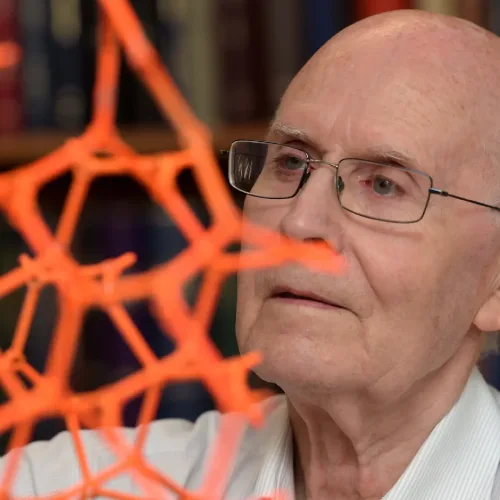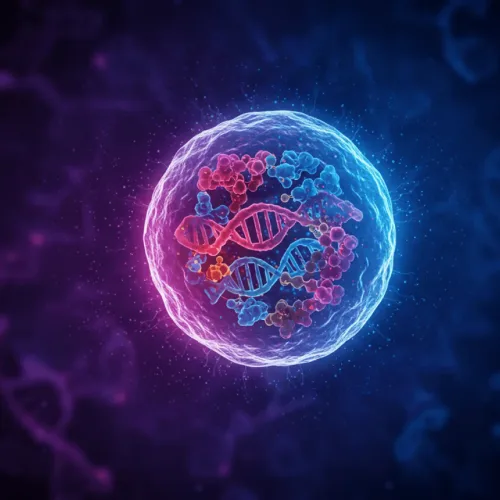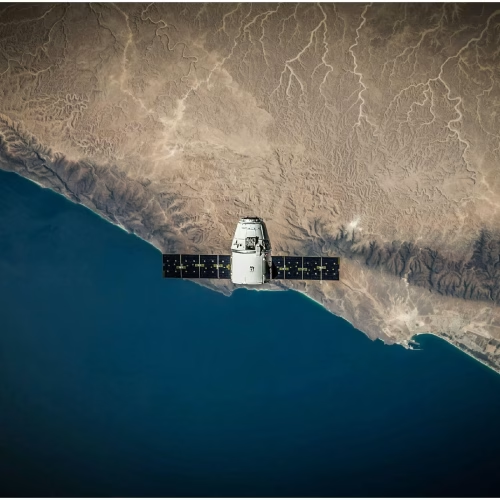Welcome to the world of quantum sensing, a field where modern physics turns into technology so sensitive that it makes ordinary sensors seem outdated. Think about it, your smartphone scans your fingerprint, your car spots obstacles, and your smartwatch tracks your heartbeat. Now imagine sensors that go even further. These sensors can detect the faint magnetic signal from a single living cell. They can also measure gravity so precisely that they uncover hidden tunnels beneath the ground.
From MRI machines that look inside our bodies to GPS satellites that guide our journeys, sensing technology already shapes our daily lives. But quantum sensors take this to a whole new level. They can map the magnetic field around a single protein molecule. They can detect tiny gravitational changes to uncover hidden minerals deep underground. Furthermore, they can even track submarines without using any external signals.
Quantum sensing combines the fascinating world of quantum mechanics with real-life impact. It transforms complex physics from chalkboard equations into powerful tools. These tools solve real problems, such as understanding how our brains function or finding clean water in drought-hit regions.
We’re now teaching atoms and light to become the most sensitive measuring tools ever created. Ready to see how this revolution is unfolding? Let’s dive in.
What Is Quantum Sensing Technology?
Quantum sensing is about using the strange quantum behavior of atoms and particles to measure things with incredible accuracy.
Unlike classical sensors, like thermometers, that detect bulk properties, quantum sensors rely on single atoms, photons, or even tiny crystal defects as their main sensing tools. These ultra-small elements are extremely sensitive to their surroundings.
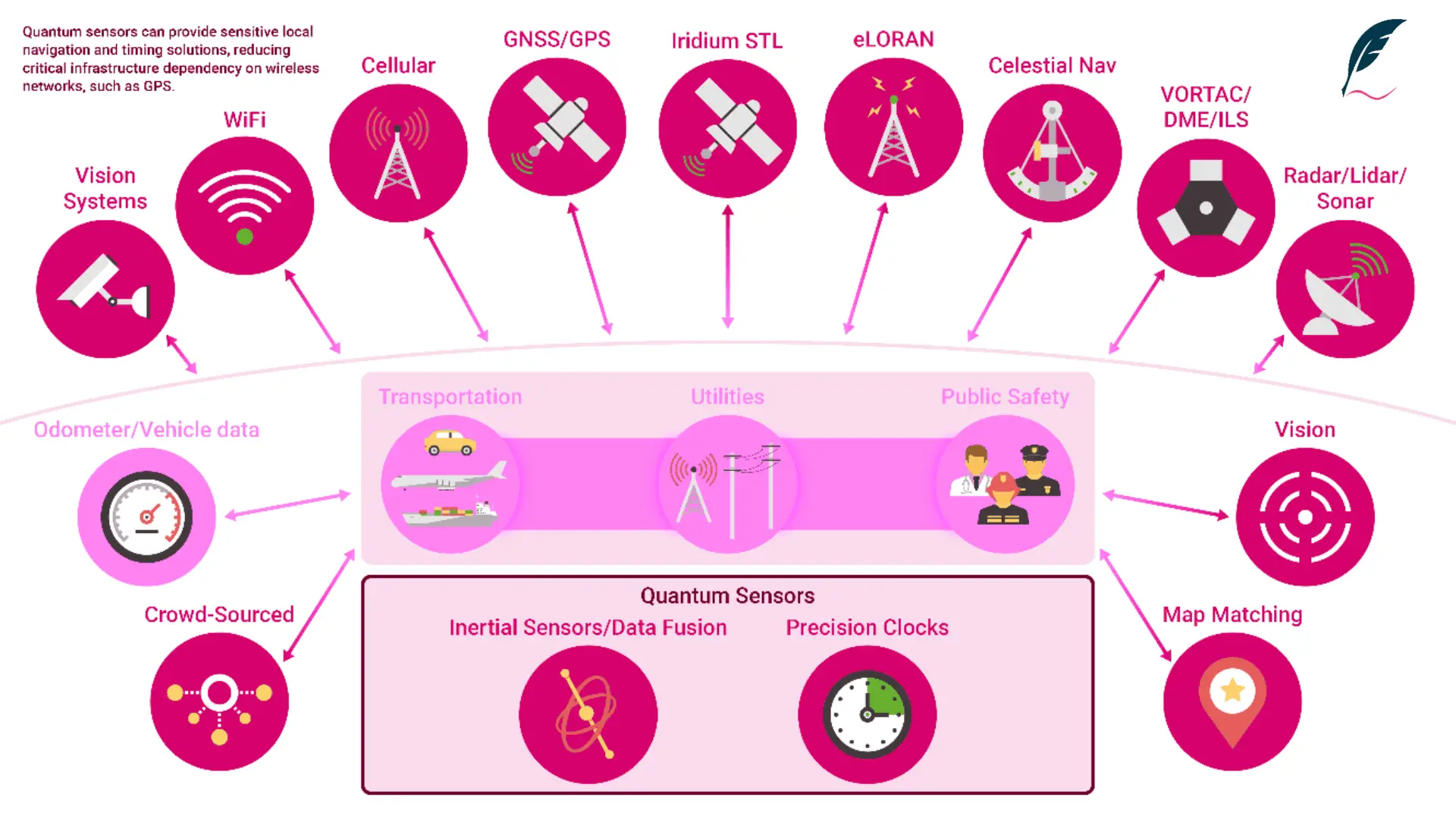
Think of it this way: a regular sensor might completely miss the tiniest vibration, like a flea landing on a huge table. A quantum sensor is like balancing an atom on your fingertip. It is so delicate that even the faintest change can disturb it. This includes whether it’s a weak magnetic field, a soft gravitational tug, or a slight temperature shift. By observing how the atom’s spin or energy levels change, scientists can detect changes. They can measure things with a precision that classical sensors could never achieve.
Quantum Effects: The Science That Turns Imagination into Reality
What gives quantum sensors their mind-blowing sensitivity? It all comes down to three strange but powerful quantum effects, superposition, entanglement, and squeezing. Don’t stress, we’re about to break them down in the simplest way possible.
1. Superposition
Imagine flipping a coin, but instead of landing on heads or tails, it keeps spinning in the air. It’s both and neither at the same time until you finally look at it. That’s what we call superposition.
In quantum sensing, atoms or photons can exist in several states at once. This makes them extremely sensitive because every outside force, like magnetism, gravity, or even time, affects all those states together. When we measure the quantum particle, it reveals how the environment disturbed that fragile balance.
Think of it this way: a normal sensor works like a single guard watching for intruders. But in superposition, it’s as if a thousand guards are watching from different angles at the same time. You end up catching far more detail.
2. Entanglement
Entanglement happens when two particles become deeply linked, so much that measuring one instantly reveals information about the other, even if they’re far apart. Einstein famously described this strange connection as “spooky action at a distance.”
In quantum sensing, entanglement completely changes the game. When we entangle two particles, one can act as a reference while the other performs the sensing. Any tiny change that affects the sensing particle instantly shows up as a difference compared to its entangled partner. This connection helps cut down noise and uncertainty, making measurements far more precise.
Think of it like two friends who are perfectly in sync. One friend walks through a magnetic field while the other stays still. When they later “compare notes” through their quantum link, they can tell exactly what happened, without ever needing to talk.
3. Squeezing
Here’s where it gets really smart. Quantum mechanics tells us that you can never know everything about a particle perfectly, there’s always some uncertainty. But squeezed light finds a clever way around this by redistributing that uncertainty.
Think of it like this: you’re trying to measure an object’s exact position. Quantum noise keeps making your reading blurry. By “squeezing” the light, you reduce the uncertainty in the position to almost nothing. This allows the uncertainty in another property, like momentum, to grow instead. You’re not removing uncertainty altogether; you’re just shifting it to a place where it doesn’t interfere with your measurement.
In gravitational wave detectors like LIGO, scientists use squeezed light to measure incredibly tiny distance changes. This trick lets them detect ripples in spacetime, distortions smaller than the width of a proton over a 4-kilometer stretch.
Platforms Powering Quantum Sensing
Quantum sensing uses several main physical platforms, each designed for specific types of measurements and environments. The table below highlights five major platforms that are actively shaping the future of quantum technology.
| Platform | What It Measures | How It Works | Pros | Limitations | Real-World Use |
|---|---|---|---|---|---|
| NV Centers (in diamonds) | Magnetic field sensing, Temperature | Electron spin states of nitrogen vacancies in a diamond lattice | Room-temp use, high spatial resolution, robust | Can be expensive to fabricate, lower coherence time than atoms | Biological imaging, drug delivery monitoring |
| Atomic Magnetometers | Magnetic fields, brain signals (MEG) | Optically pumped magnetometer uses lasers to align electron spin states in an atomic gas (e.g., Rubidium) | Portable, accurate, low power | Needs careful magnetic shielding, slightly larger size | Wearable MEG, geophysical surveys |
| SQUIDs (Superconducting Quantum Interference Devices) | Magnetic flux | Uses superconducting loops and Josephson junctions to measure magnetic fields | Extremely sensitive, best field sensitivity available | Cryogenic cooling required, complex setup | MRI systems, deep-sea research, fundamental physics |
| Trapped Ions | Electric fields, time | Laser cooling and trapping of single ions; uses quantum interference (Ramsey spectroscopy) | Highest known precision physics and stability for timekeeping | Complex setup, delicate operation, vacuum required | Atomic clocks, fundamental research |
| Cold-Atom Interferometers | Force, Gravimetry, Acceleration | Uses lasers to put atoms into superposition states to measure acceleration or gravity through interferometry | Can provide GPS-free navigation (inertial sensing), stable | Large footprint, high vacuum/cooling required, experimental stage | Navigation Without GPS, infrastructure monitoring |
Each platform uses quantum mechanics in its own unique way. Yet, they all have one powerful thing in common. They possess a level of sensitivity that no traditional sensor can ever reach.
For those curious about diving deeper into quantum mechanics fundamentals, Quantum Physics for Beginners by Zbigniew Ficek offers accessible explanations that make these concepts click without requiring a physics degree.
Quantum Sensing Case Studies: Real-World Applications and Breakthroughs
The theory is exciting, but quantum sensing truly proves its power in real-life use. Let’s dive into four amazing examples where this technology is making a real impact.
Seeing Brain Activity in Real Time
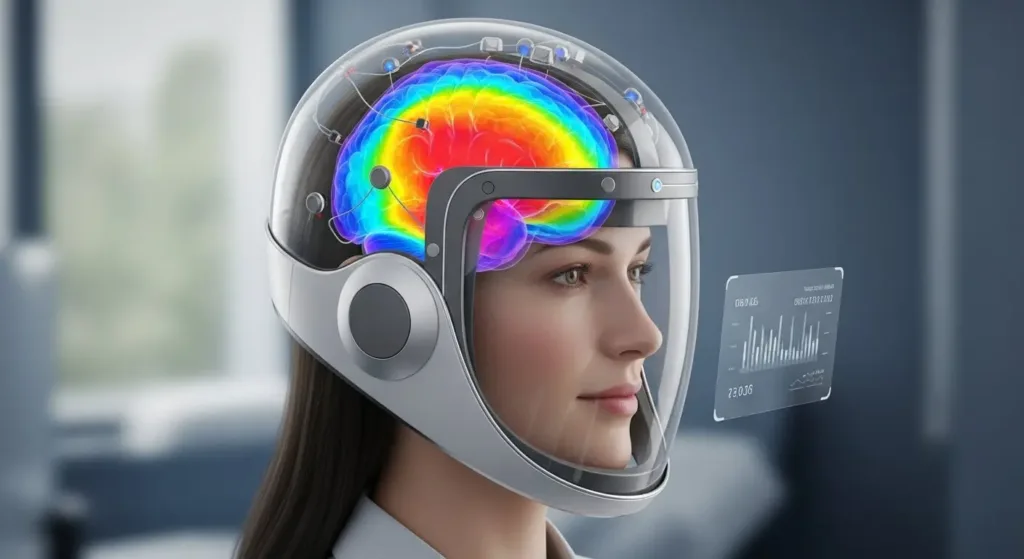
Traditional brain imaging has its limits. EEG lacks precision, while fMRI demands huge, expensive machines. Now, wearable quantum magnetometers are changing that game. These portable devices can detect the tiny magnetic fields your brain produces every time neurons fire.
Optically pumped magnetometers, designed to fit inside a lightweight helmet, let researchers measure brain activity while you move freely. They capture signals with a level of accuracy that once required a massive MRI scanner. This breakthrough could transform how we diagnose epilepsy, explore consciousness, and even study how thoughts are formed.
Companies like QuSpin are already turning this idea into reality. They’re building compact magnetoencephalography (MEG) systems. These are essentially portable brain scanners. One day, they could become as common in clinics as stethoscopes.
Mapping Nanoscale Magnetism in Biology
How do proteins fold? How do cells react to their surroundings? To find these answers, scientists need to look at the nanometer scale, much smaller than what any optical microscope can see.
That’s where NV center magnetometers come in. These tools rely on tiny defects inside diamond crystals to detect the magnetic fields of individual molecules. When laser light shines on these nitrogen-vacancy centers, they glow in unique ways. By studying this glow, researchers can map magnetic fields with astonishing nanometer-level detail.
Using this method, scientists have watched iron atoms move inside proteins, discovered how bacteria sense Earth’s magnetic field, and explored how cells communicate with each other. It’s like performing an MRI scan on a single molecule, something that was once thought impossible.
Detecting Hidden Cavities and Minerals
What lies beneath our feet? Traditional ground-penetrating radar can only see so far. But cold-atom gravimeters take things to the next level, they use quantum interferometry to measure gravity with stunning precision.
These advanced sensors cool atoms to nearly absolute zero and then use lasers to split them into superposition states. As the atoms fall, they form interference patterns that respond to even the slightest change in gravity. This allows the sensors to detect underground voids, mineral veins, or hidden water aquifers with ease.
Mining companies now rely on quantum gravimeters to locate ore deposits without drilling a single test hole. Civil engineers use them to map buried pipes and tunnels. Archaeologists even uncover secret chambers inside ancient structures. In the UK, the National Quantum Technology Hub has led the way, using these sensors to map underground utilities beneath city streets with unmatched accuracy.
Navigation Without GPS
GPS works almost everywhere, until it doesn’t. Submarines lose connection because satellite signals can’t reach underwater. Military teams also face risks from GPS jamming. That’s where quantum inertial sensors step in. These sensors measure acceleration and rotation with incredible quantum-level accuracy, allowing navigation without depending on any external signals.
They work through atom interferometry, a technique that detects the smallest shifts in motion. By tracking every movement and turn precisely, quantum inertial measurement units (Q-IMUs) can guide a vehicle for days or even weeks without the usual GPS drift errors.
Defense organizations around the world are already investing big in this technology. But its impact goes far beyond the military. Autonomous cars, airplanes, and drones could also use it. They can move safely through areas where GPS doesn’t work, like tunnels and dense cities. This capability is crucial during disasters when satellite systems go down.
Who’s Building Quantum Sensors? The Commercial Frontier of Quantum Technology
Quantum computing often steals the spotlight, but most experts agree that quantum sensing will be the first area of quantum technology to bring in real commercial success. It’s easier to set up, needs less complex infrastructure, and offers clear, practical advantages right away.
The field is growing fast, with breakthroughs coming from universities, government programs, and agile startups worldwide. Teams connected to the UK Quantum Tech Hub are leading the charge. Companies like Quside, known for its quantum random number generators, are also prominent. Another key player is Qnami in Switzerland, which turns NV-center scanning into commercial products. Additionally, QuSpin is pioneering ultra-sensitive atomic magnetometers.
The total global market for quantum technologies, driven largely by quantum communication and sensing, is projected to exceed $10 billion by the mid-2020s, with sensing and metrology applications accounting for a significant and rapidly growing share.
Industries like healthcare and resource exploration are pushing this market forward because they urgently need the high precision and ultra-sensitive detection that quantum devices offer. These technologies fill a major gap that traditional tools can’t meet.
Quantum Sensing Explained for Learners
Want to dive deeper into quantum sensing? Here are resources for every level:
| Category | Resources | Description |
|---|---|---|
| Beginner Reads | Wikipedia, ScienceAlert, or MIT News | Great starting points for simple, accurate overviews and news on the latest breakthroughs. |
| Intermediate | Nature Reviews Physics, Rev. Mod. Phys. | Peer-reviewed journals that offer comprehensive, high-level summaries of the field’s advancements and challenges. |
| Hands-on | MIT OpenCourseWare, YouTube explainers, ArXiv links | Free university lectures and pre-print academic papers for the dedicated learner seeking technical detail and the cutting edge of research. |
FAQs About Quantum Sensing
Yes! Many can. NV-center diamond sensors work perfectly at room temperature. Atomic magnetometers typically operate between 150-200°C (hot, but manageable). However, SQUIDs and some cold-atom sensors need cryogenic cooling to function. Room-temperature operation is a major focus for making quantum sensors practical and portable.
Some already are! Atomic clocks (a type of quantum sensor) maintain GPS satellite timing. Commercial quantum magnetometers exist for geological surveys and medical research. Consumer applications are 5-10 years away. Expect quantum-enhanced smartphone sensors, wearable medical devices, and automotive navigation systems in the 2030s as costs decrease and miniaturization improves.
NV centers are defects in diamond where a nitrogen atom sits next to a missing carbon atom. When illuminated with green light, electrons in the defect emit red fluorescence. Magnetic fields affect the electron’s quantum spin states, changing the fluorescence brightness. By measuring this brightness change, scientists determine magnetic field strength with nanometer precision.
Incredibly bright. Within 10 years, expect portable quantum gravimeters for infrastructure inspection, wearable quantum magnetometers for continuous health monitoring, and quantum-enhanced navigation systems immune to GPS jamming. Long-term, quantum sensor networks could monitor entire cities for structural health, detect natural disasters before they strike, and enable previously impossible scientific discoveries. The quantum sensing revolution is just beginning.
Conclusion: The Future of Feeling the Invisible
Quantum sensing brings modern physics out of the lab and into real life. Scientists are using the strange yet powerful principles of quantum mechanics. These include superposition and entanglement. They are building detectors that can sense even the tiniest changes in the world around us.
This new wave of quantum technology isn’t just about improving old tools, it’s about creating entirely new possibilities. Imagine seeing brain activity in real time, navigating using only gravity, or detecting diseases at their earliest, most hidden stages. The path toward quantum sensing is a thrilling mix of discovery and engineering creativity.
If you’re fascinated by how atoms turn into ultra-sensitive sensors, it’s time to explore further. Check out our Modern Physics Quiz to test your knowledge.
Recommended Resources for Curious Minds
If you’re ready to go beyond the basics, these resources will assist you in diving deeper into quantum sensing. They will also guide you in precision physics, expanding your understanding and sharpening your knowledge.
- The Age of Entanglement by Louisa Gilder
- Introduction to Quantum Metrology by Waldemar Nawrocki
- Quantum Computation and Quantum Information by Michael A. Nielsen
At Learning Breeze, we love turning complex science into something everyone can understand. Quantum sensing is like humanity’s new superpower, it lets us measure the world with incredible precision. We hope this guide helped you see what quantum sensing is. We also hope you understand why it’s important and how it’s shaping the future. Stay curious, keep exploring, and never stop learning.

